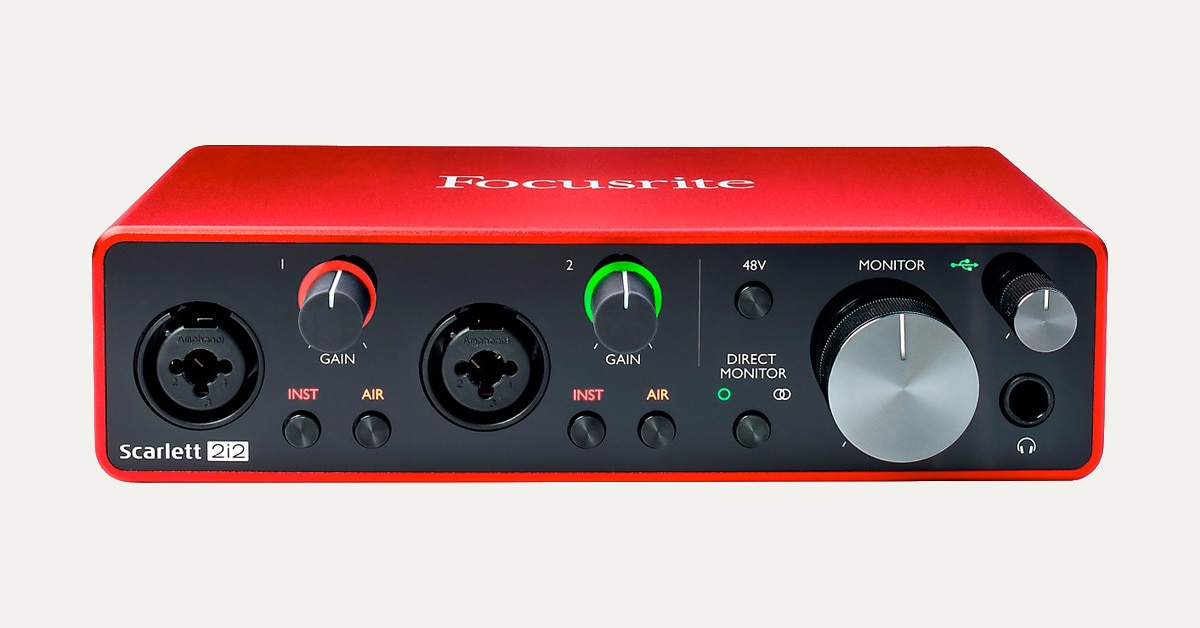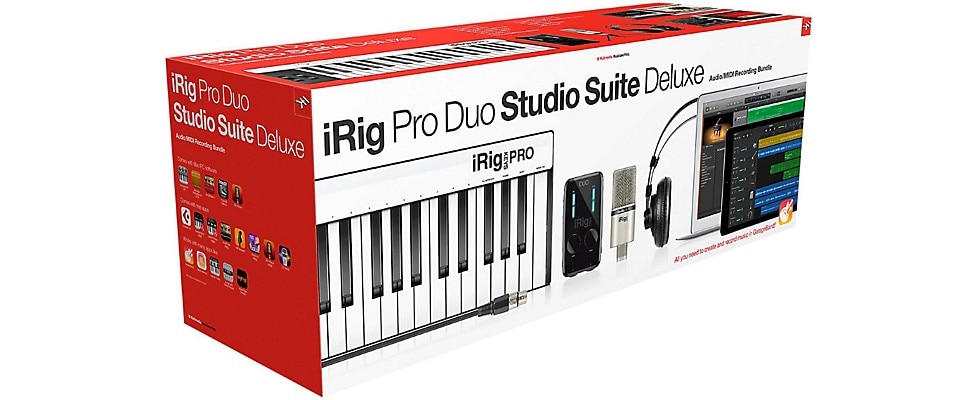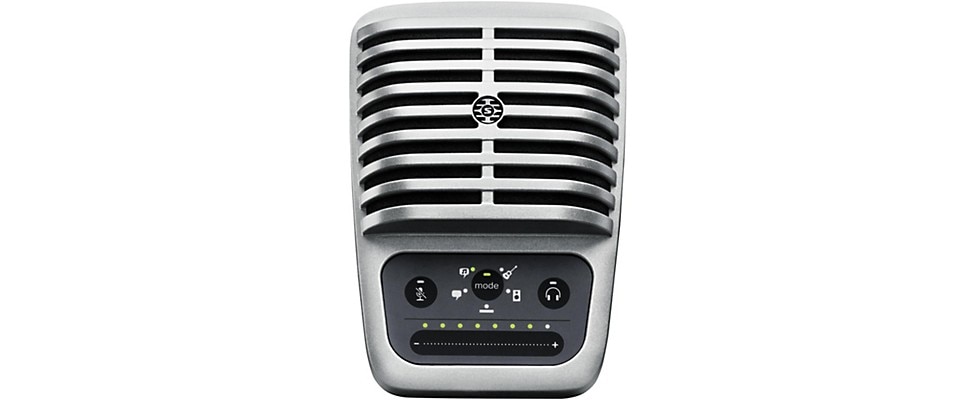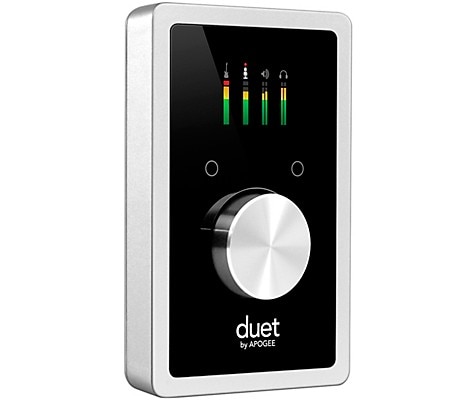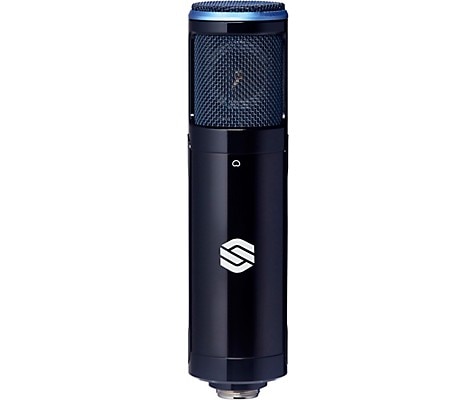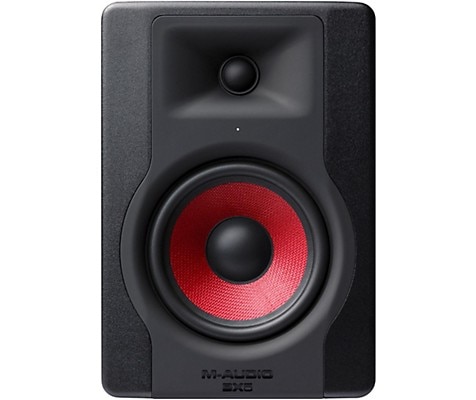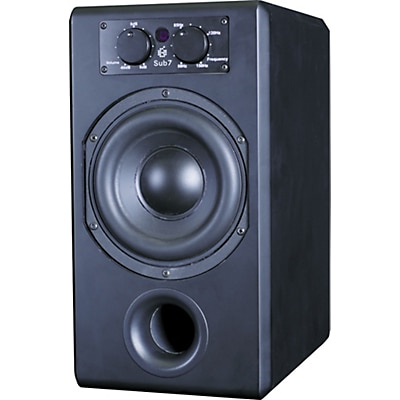If you're looking to start recording or mixing music and not sure what gear you need, you've come to the right place. We'll help you choose the best audio recording equipment to match your skills, music and budget. Whether you're looking for an audio interface, microphones, studio monitors or more, we'll help you build out your home studio with all the gear you need to get recording today.
Table of Contents
What Types of Recordings Do You Have Planned?
Choosing a Recorder
Choosing a Computer Audio Interface
Choosing Software
Choosing Recording Microphones
Choosing Audio Monitors
Choosing Headphones
Choosing Effects/Signal Processors
Choosing Recording Accessories
Glossary of Recording Terms
Are you looking for a piece of recording equipment or maybe an entire recording setup, but are having trouble deciding what you should get? Well, your search stops here.
Our guide will introduce you to the basic equipment and terminology of recording music and help you make the choices that are right for you.
There are a few pieces of gear that every musician interested in recording will need, and when you break it down, it's pretty straightforward. Basically, you'll need something to record and edit your music, a way to listen to what you've recorded, and a way to share your recordings.
Aside from these basics, the gear you need will be based specifically on the type of recordings you'll be making.
If you need some in-depth information on recording from the basics to advanced topics, the many helpful books and videos on recording that we sell are a great place to expand your knowledge.
What Types of Recordings Do You Have Planned?
The key to choosing your gear is to focus on the types of projects you have planned, then select the equipment that has the features and functions you need.
So, let's start by breaking down the types of equipment you'll need based on what types of music you'll be working on. Keep this question in mind as you read and think about gear: What features do I need based on the types of recordings I want to make?
1. Recording solo or duo performances: Small Home Studio
If you're working on a small solo- or duo-based project, your needs might be pretty basic. Whether you choose to use a computer-based recording system or a standalone multitrack recorder, you'll need two to four tracks of simultaneous recording capability, at least one microphone, and headphones and/or studio monitors for playback and overdubbing. You'll also want to get the proper cables for connecting your gear and probably a mic stand or two.
You'll need enough inputs to handle all your vocal and instrument microphones as well as inputs for electronic instruments such as an electric guitar, bass, or keyboard. Your computer recording software or multitrack recorder may have effects built in, but you also might want an external signal processor. More on them later.
For recording solo or duo performances, an audio interface that includes one or more mic preamps may be all you need to connect to your computer or standalone recording equipment.
Along with its acclaimed mic preamps and 24-bit/192kHz definition, the Focusrite Scarlett 2i2 USB Audio Interface packs features to make it the heart of your mobile recording rig.
2. Recording groups: Medium Home Studio
For recording a group, you'll want a recorder with four to 16 channels or more of simultaneous recording, a selection of various microphones, studio monitors and headphones for playback and overdubbing; the appropriate cables and connections for hooking it all up; some mic stands; one or more dedicated mic preamps, and a compressor or recording channel or two to use on vocals and solo instruments, especially acoustic instruments.
This should be enough to record the entire band, depending on how many mics and inputs you use for the various instruments and vocals. You may need a mixer with 12 channels or more and several buses, depending on the inputs and mixing capabilities of your audio interface or recorder. Keep in mind that a full drum kit can require five or more mics and mic inputs all by itself. You also may want some extra processing options, such as dedicated computer software effects or an external signal processor or two.
And naturally, once you’re set up with the basics, you can also expand to some recording-related accessories such as direct boxes for recording instruments such as electric guitars, basses, and keyboards directly into your recorder. Other accessories such as pop filters, studio foam, monitor stands, racks and recording furniture to help keep things in order and refine the quality of the sound you capture.
As you have probably realized by now, putting together a recording rig can be challenging. At Musician’s Friend we offer a huge selection of recording packages with carefully chosen components that will get you going with a minimum of hassle. These packages also offer great value since their prices offer savings over buying the individual components.
3. Recording larger projects: Project Studio
Is recording more than a hobby for you? If you've got a space set up specifically for recording and you're working on professional-level projects, you should be considering either a hardware multitrack recorder, computer-based audio interface and/or DAW software that delivers 16 tracks or more of simultaneous recording.
Pro-level project studios should have a several pairs of monitors and a selection of headphones available for critical listening. You'll also need a varied collection of microphones that includes dynamic mics as well as ribbon and condenser microphones types to cover most vocals, instruments, and situations. An array of signal processors such as microphone preamps, recording compressors and limiters, channel strips, equalizers and effects processors add versatility to your toolbox and polish to your productions. You'll also want to If you prefer the hands-on feel of real faders and knobs, consider a high-quality, recording mixer with 24 channels or more, and at four or more buses and mix groups in addition to the main outs.

With plenty of IO, 8 mic preamps, and super-low latency, the Apogee Ensemble Thunderbolt 2 Audio Interface is a great choice for project studios.
Think about the space you are recording in as well. Proper use of acoustic foam and other acoustic treatment materials will help you tame unwanted echoes and resonances inside the studio and improve the quality of your recordings. You’ll also hear more accurately in an acoustically treated room, which can lead to better mixes.
As your recording setup gets bigger, it gets more complicated and will benefit from some organization. Accessories like monitor stands, monitor isolation pads, multichannel headphone amplifiers, direct boxes, and pop filters can pile up. Studio furniture should help keep your setup in order.
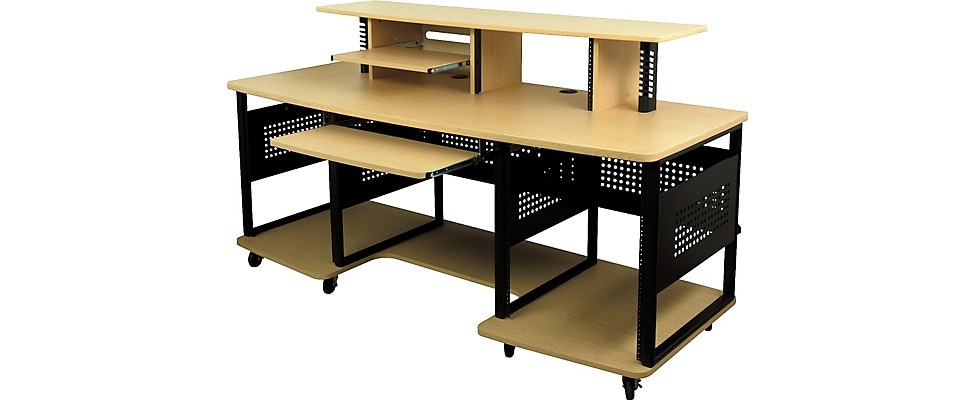
The Studio RTA Producer Station offers an ergonomically designed workspace that provides storage and rack space to neatly house all the components of a typical project studio.
Choosing a Recorder
You have a number of options for how you approach recording audio, and each has its own advantages. For many, a computer-based recording setup using audio software is the most versatile and convenient solution. Others like the physical control offered by hardware. We will take a look at these different approaches and walk you through the buying considerations for each.
Computer
These days, most home-based recordings are made using a computer or iOS device rather than hardware-based recording consoles or tabletop recorders. Digital Audio Workstation (DAW) software offers features and capabilities that would otherwise be quite expensive in a hardware-based setup.
Now, you most likely already have a desktop or laptop computer that you have thought of using for your recordings. However, you’ll want to take note of some specs that are important when it comes to deciding whether your computer can handle the job.
CPU
The computer’s central processing unit (CPU) is the component that processes instructions sent from your computer programs. How quickly and efficiently a computer can do this is determined by its clock rate (measured in GHz), and the number of processing cores it has. Since you will be plugging in a number of peripheral devices and layering multiple tracks, it's important to have plenty of processing power.
RAM
Random access memory (RAM) is a type of memory that programs use to perform audio processing tasks. Typically, audio software and the devices you plug into your audio workstation will require a lot of this type of memory, so more is better. For your recording setup to run smoothly, you'll want a computer with a minimum of 16GB of RAM, and preferably more for complex recordings. Look for a computer that offers plenty of RAM expansion capability.
Storage
The audio files you'll be creating are quite large, taking up roughly 800MB per 80 minutes of recorded audio when recording at the CD standard of 44.1kHz/16-bit. To store all this, you will want a hard drive with a minimum of 1TB of storage. You can also purchase high-speed external hard drives designed to work well with your audio files.
The Glyph StudioRAID mini offers compact and reliable external storage of your audio files with capacities ranging from 1–4TB.
Mac or PC?
Deciding whether to go with a Mac or PC is a little different for audio recording than it is for other computer uses. While a Windows PC is certainly capable of the tasks you'll need to perform, you'll find that Mac has become the industry standard, and the preference for many musicians and recording engineers.
The reason for this is that Mac has a strong track record of reliability and stability, partly owing to its strictly controlled designs and application standards. Additionally, many professionals are drawn to Mac-exclusive hardware and software products due to their excellent integration with Apple products.
That said, many applications and USB audio interfaces are compatible with both PCs and Macs.
Hybrid multitrack recorders/computer audio interfaces
Even though computer recording may rule the day, there are still advantages to dedicated hardware for recording, and one of the most important is portability. Keep in mind that if you plan to do a lot of recording on the go, rather than primarily in a single location, you might want hardware that can record audio without an attached computer.
One option that is both portable and versatile is to buy recording hardware that can act as a USB audio interface when you use it with your computer. You will find many interfaces with this capability.

The very portable Zoom R16 Multitrack Recorder/Interface records to SDHC cards of up to 32GB, has 8 balanced XLR/1/4-inch inputs, more than a 100 studio quality effects, and works with most DAW software.
Mobile recording with iOS
An alternative approach to mobile recording that can yield excellent results is to use your iPad or iPhone with peripherals designed for the job. You'll find a number of mobile recording options available on the Musician's Friend site to turn your iOS device into a miniature recording studio on the go. With hundreds of recording, mastering, and effects apps to choose from, the sky’s the limit in terms of of iOS-based recording possibilities.
IK Multimedia's iRig Pro Duo Studio Suite Deluxe comes with all the hardware you need to produce greatgreat iOS recordings. Even better, it's compatible with Mac/PC and Android.
The rapid development of musician-friendly apps on the iOS platform has led to the introduction of lots of iOS-enabled gear. These days, your iPhone or iPad can be transformed into the command center for all your audio productions. Harnessing the iOS-aware microphones, mixers, interfaces, and controllers found in the Musician’s Friend iOS Store is a highly portable and affordable way to develop your music production skills while creating projects that can rival professional work.
The Shure Motiv MV51 large-diaghragm condenser mic connects directly to your Lightning-equipped mobile devices plus Mac and PCs and produces astoundingly detailed recordings with plug ’n’ play simplicity.
Multitrack recorders
If you opt to go for dedicated hardware for your recording rather than a computer-based system, there are a number of options. One of their greatest advantages are dedicated physical knobs, buttons, and faders that can be much easier to use than delving through the often complex multi-layered menus of computer-based software.
When you're choosing a multitrack recorder, pay attention to how many tracks you get: audio, MIDI, actual and virtual, as well as how many you can record and play back simultaneously. All but the most basic multi-trackers should give you some editing and mixing features to polish your recordings.
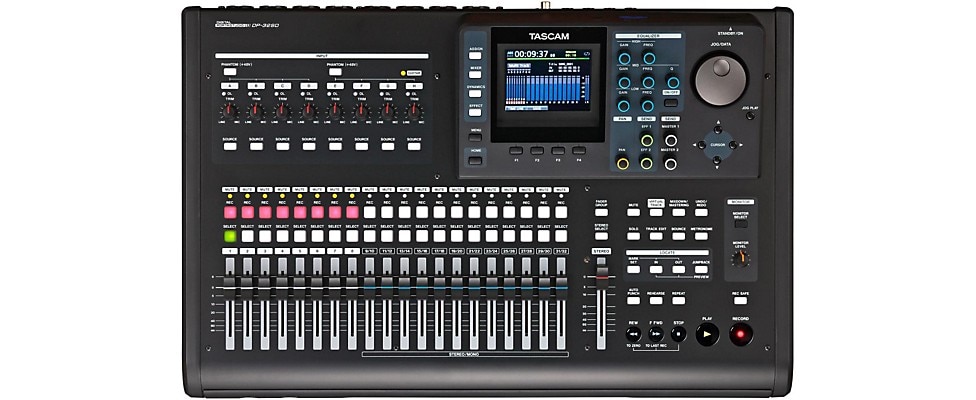
A great option to wading through software menus, the Tascam DP-32SD Portastudio offers real hands-on control of all major functions and up to 32 tracks of simultaneous playback.
While you're browsing the selection and kicking the tires, here are some additional specifications to pay attention to:
I/O (Inputs/Outputs)
The number and type of inputs and outputs should be a principal concern. You need enough inputs to plug everything in with all the connection types you'll want to use. Among the options for connection types, you'll see balanced, unbalanced, phantom powered for condenser mics, XLR, 1/4", TRS, MIDI, Hi-Z, surround sound, RCA, S/PDIF, word clock, ADAT and AES/EBU to connect your gear. Most recorders also include USB, FireWire, or Thunderbolt ports for computer connectivity.
Take an inventory of the mics, instruments and other gear you'll want to connect and understand the types of connections they use. This way, you'll know what kind of specs to look for among the many available options.
Audio Quality
Make sure you check the specs for sampling frequency and bit rate, handled by the analog-to-digital (A/D) converter. Generally speaking, the higher the number, the higher the audio quality, with 16-bit/44.1kHz being the standard for CDs, and 24-bit converters the standard for professional recording. Higher sampling frequencies offer more headroom and high-frequency response—important audio factors for professional recordings.
Controls
Examine the mixer section to see what type and quality of controls it gives you. Look for meters, faders, knobs, EQ and sends. If it doesn't have a mixer section, you'll need to buy a mixer.
Storage
Multitrackers record internally to either flash memory or a hard drive, and some will let you record to an external storage device or upgrade the storage with a bigger storage device. Multitrack audio can take up a lot of storage, so keep that in mind.
Extras
Some of the features that can increase your recording options are things like an internal MIDI sequencer, modules that generate instrument sounds, a built-in effects processor, a separate mastering section, and an onboard CD burner. You should also give some thought to how intuitively it is laid out and how easy it is to use.
Handheld/Field recorders
If your recording needs are simple—for instance, perhaps you want a tool for recording practice sessions or podcasts—you might consider a portable handheld or field recorder.
Typically, these small devices house a pair of condenser mics for quality recordings, and they record audio to a removable flash drive so you can easily transfer the files to your computer or burn them to CD.

The Zoom H6 Handy Recorder has a pair of high-quality condenser mics with interchangeable capsules and advanced preamps for excellent recording quality in virtually any setting.
Choosing a Computer Audio Interface
If you choose the computer-based approach to recording, you'll need an audio interface to connect everything to your computer. Not only does this device give you a place to plug everything in, it also handles the critical role of converting analog audio signals to digital using an analog to digital (A/D) converter. It also converts the digital signal from your computer back into an analog signal using a digital to analog converter (D/A) for playback through your monitor speakers and/or headphones.
By converting your audio signals from analog to digital, your interface is handling a specialized job that takes the burden off of your computer. With a good interface, this means you can create sounds and listen to them playing back in near real-time, without the latency that can make the recording process difficult. Look for an interface equipped with high-quality A/D and D/A converters that accurately translate your sound from the analog to digital realm and back again. (See the Audio Quality section below about how to compare converter specs.)
The Apogee Duet for Mac and iOS works with your Mac or iPad using high-quality converters and dual mic preamps to accurately capture and convert your music for computer-based recording and editing.
When shopping for a computer audio interface it’s essential to figure out whether it will work with your computer. Two things to check are: how it connects to your computer and the manufacturer's system requirements for the interface. The main connection types are USB, FireWire, or Thunderbolt. Review the processor, memory and connection requirements to confirm compatibility with your computer.
Universal Audio's Apollo X audio interfaces provide studio-grade recording and monitoring in combination with on-board DSP for powering their UAD plug-in platform.
I/O
Also of principal concern should be the number and type of audio inputs and outputs: Balanced, unbalanced, phantom powered, XLR, 1/4", TRS, MIDI, Hi-Z, surround sound, RCA, S/PDIF, word clock, ADAT and AES/EBU. Pay attention to how many channels of audio it will record and playback simultaneously.
Controls
Some computer interfaces include hardware controls, some have software controls, and some have both. They also often include mixer software to handle routing of the I/O and level meters.
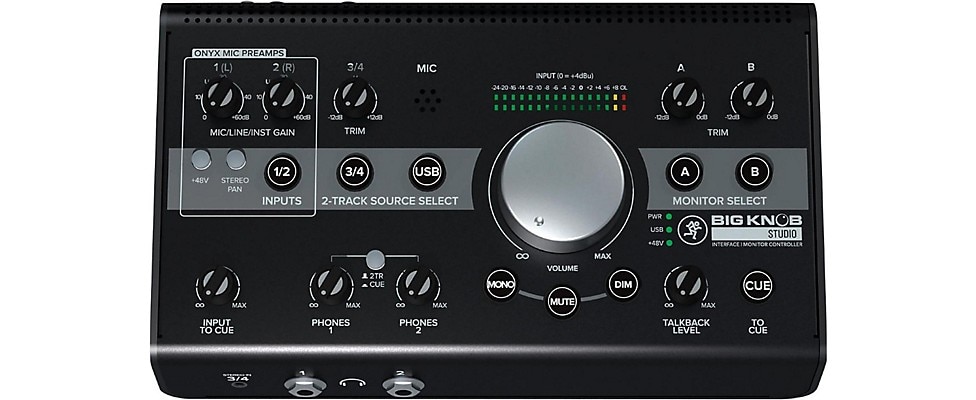
The Mackie Big Knob Studio Monitor Controller Interface features dual Onyx preamps, up to 192kHz/24-bit recording and playback and offers plenty of monitoringchoices.
Audio Quality
Check the specs for sampling frequency and bit rate offered by the analog-to-digital converter. Generally speaking, the higher the number, the higher the audio quality, with 16-bit/44.1kHz being the standard for CDs, and 24-bit converters the standard for professional recording. Higher sampling frequencies offer more headroom and high-frequency response in digital recordings—important factors for professional-sounding recordings.
Latency
All computer audio interfaces have some latency, or delay, but very good ones have so little you don't notice it. Most good computer audio interfaces will provide a way of measuring and controlling latency. Some provide a workaround, such as hardware signal monitoring. An interface with too much latency makes it nearly impossible to perform normal multitrack operations like overdubbing or real-time monitoring. A slower computer will contribute to latency.
Learn more about the choosing the right computer interfaces with our expert Audio Interface Buying Guide.
Choosing Software
Without audio software, computers would not be the music production powerhouses they are today. And there are plenty of software options capable of handling your audio production at every point from start to finish: recording, mixing, editing, mastering, duplicating, and in some cases even songwriting.
An industry standard software suite you will see in most modern recording studios is Avid's Pro Tools. With lots of professional-grade features and plug-ins, Pro Tools is an excellent choice for those seeking the highest quality audio possible and nearly unlimited sound processing options. However, Pro Tools is a relatively complex program for novice users and involves a steep learning curve.
For those looking for lots of tools to help create music, in addition to recording and editing it, Propellerhead's Reason is a very popular choice. With a sequencer loaded with synths, samplers and other music creation tools, it's easy to produce music from start to finish. There’s a Reason version to match most needs and budgets.
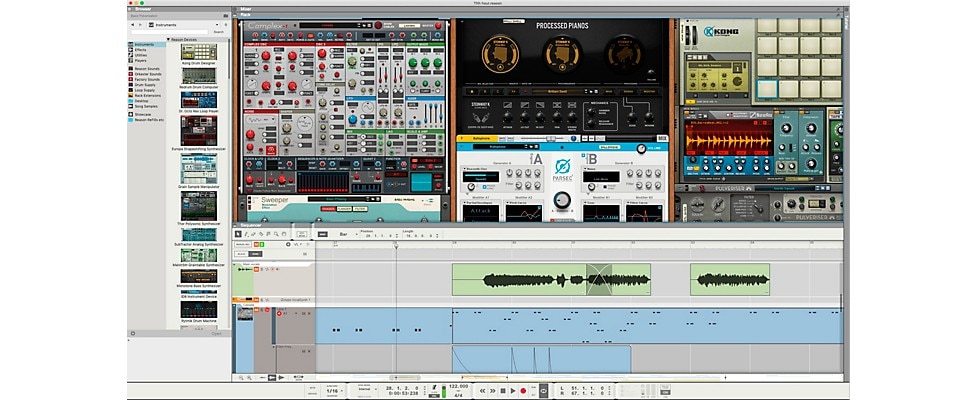
Reason is a favorite among producers thanks to its huge set of drums, synths, and effects wrapped up in an intuitive DAW interface.
We’ve just touched on a few of the most popular audio production applications. Explore our huge selection of music software for more great choices.
Choosing Recording Microphones
To get your music into your recording setup, you'll need at least one good microphone, and probably several. The main types to consider are condenser, dynamic, and ribbon microphones. Each type has different sound characteristics and is used for recording in different situations.
The large-diaphragm Sterling Audio ST151 Large-Diaphragm Condenser Microphone is very modestly priced, yet captures highly detailed sound from voices and instruments.
Learn more with our Microphone Buying Guide.
Choosing Audio Monitors
Listening to the playback is an important part of the recording process, and you'll want to make sure you've got the right kind of speakers to handle the job. Here, we'll take a closer look at what makes a good set of studio monitors and cover some concepts to keep in mind when you're making your selection.
Studio Monitors
Studio monitors are critical to good recordings. Intended to provide you with an accurate picture of the audio you are recording, overdubbing, mixing, editing and mastering, they are your first defense against bad sound. Most monitors used for recording today in homes and studios are near-field monitors. A near-field monitor is small enough that you will primarily hear sound coming directly from it—not sound reflecting off of the studio walls. When considering monitors, look at the frequency response and THD specs to get an idea of the monitor's accuracy.
Tweeter and main driver size will also affect how accurately a speaker can reproduce audio, since larger drivers can reproduce low frequencies more accurately.
The M-Audio BX5 is a trusted monitor in countless home studios due to its flat frequency response and accurate stereo imaging.
I/O
For connections, monitors usually have 1/4”, XLR, RCA or S/PDIF jacks. Some offer only unbalanced or balanced I/O, and some have both.
Active/Passive Studio Monitors
Active monitors, also called powered monitors, have one or more power amplifiers built into the cabinet, and they’re often biamplified, using separate amps matched to each driver for optimal performance.
Passive monitors, also called unpowered monitors, use a separate, external power amp that gives you some flexibility in choosing your components and setting up multi-speaker arrays. Passive monitors usually have high-quality crossover circuitry for extremely accurate splitting of high and low frequencies.
Extras
Advanced features on monitors include EQ controls, acoustic space compensation effects, balance controls, and filters.
Subwoofers
If you record beat and bass-heavy music or TV and movie soundtrack material, a subwoofer or surround setup will be helpful in monitoring the extended low-frequencies and extra channels necessary in those types of music.
The ADAM Audio Sub7 has a compact footprint, yet can reproduce frequencies down to 50Hz. Motorized controls allow easy frequency tweaks and wireless remote control.
Audio Playback
In addition to your monitors, you might want to include some decent-quality, consumer audio speakers to get an idea of how your recording will sound on consumer devices. If you need some speakers designed for that job, take a look at the Musician's Friend selection of audio playback equipment.
Listening using consumer-market headphones also can give you valuable insight about how your mix will sound on headphones that are voiced for the listening pleasure of the average music fan rather than 100% accurate sound as day-to-day recording and mixing headphones require.
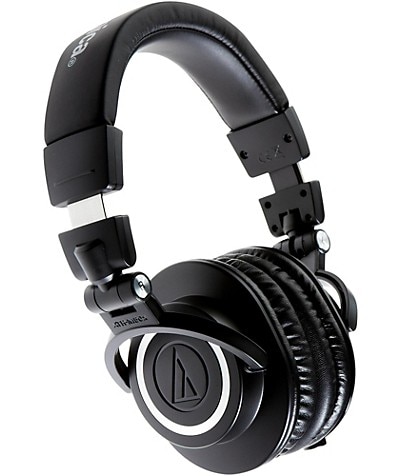
Audio-Technica's ATH-M50x headphones are a great choice for studio headphones. In addition to offering studio quality sound, these headphones are incredibly popular on the consumer market, making them a perfect choice to audition your mixes on.
Choosing Headphones
Headphones are generally used for monitoring during recording and overdubbing, but high-quality headphones can be used for nearly everything, including critical listening and mixing. When considering headphones, look at the frequency response and THD specs to get an idea of their accuracy. Driver size will also affect how accurately a speaker can reproduce audio, since larger drivers can reproduce low frequencies more accurately. For recording, be sure to get at least one pair of closed-back headphones, which have better acoustic isolation that open-back models. This design prevents sound from the headphones from “bleeding” into the microphones.Listening using consumer-market headphones also can give you valuable insight about how your mix will sound on headphones that are EQd for pleasing rather than accurate sound.
I/O
Headphones use either an 1/8” jack or a stereo 1/4” jack, and usually include an adapter for convenience when plugging into equipment that has one, but not the other.
Choosing Effects/Signal Processors
Signal processors include everything from units that produce a single effect, to multi-effect processors that can produce hundreds. Certain types of signal processors such as compressors, preamps, equalizers, noise gates, and limiters serve one single dedicated purpose with varying amounts of quality and control. Other effects such as reverbs, delays, and enhancers/exciters may produce a single effect but with many variations. Multi-effect processors include many different effects as well as variations of those effects. The main features to consider when choosing a signal processor is if it produces the type of effects and sound quality you’re seeking.
I/O
Most signal processors offer 1/4”, TRS or XLR connections, although some also have RCA, S/PDIF, ADAT, word clock and AES/EBU.
Hardware/Software
Effects processors can be either hardware- or software-based. Hardware processors come in desktop, rackmount and foot-controlled units, with rackmount being the most common. Software effects are installed on your computer like any other software program and can be used on audio recorded into your computer.
Audio Quality
Check the specs for sampling frequency and bit rate, handled by the analog-to-digital converter. Generally speaking, the higher the number, the higher the audio quality, with 16-bit/44.1kHz being the standard for CDs. Higher sampling frequencies offer more headroom and high-frequency response in digital recordings, important audio factors for professional recordings. Some signal processors will have specs listed for frequency response and THD that will give you an idea of how transparently they will handle your audio.
Controls
Look at how much control the processor gives you over its processing abilities. Not just the number of knobs, but the range of control each knob or fader gives you over the effect parameters. Units that give you more control give you more flexibility for dialing in sounds you like.
Choosing Recording Accessories
Some accessories are really necessities, and some simply make recording a little easier. You might need monitor stands, a recording desk, a patchbay, acoustic room treatment materials, a power conditioner, or a rack for your processors. You most likely will also need cables, mic stands, and recording media and extra storage for recorded digital audio.
At Musician’s Friend you can buy all the recording accessories you'll need to have a great audio studio setup. And if you'd like to get a complete package to get you started, Musician's Friend has a range of options available on our recording packages page. These packages take the guesswork out of putting together a recording rig since all components are carefully selected for compatibility with each other.
We carry multitrack recorders, computer audio interfaces, computer hardware, computer software, microphones, preamps, signal processors, mixers, headphones, and monitors from great brands like TASCAM, Fostex, Roland, Yamaha, Korg, Presonus, Digidesign, M-Audio, E-MU, MOTU, Alesis, Apple, Steinberg, Sony, BIAS, Event, JBL, Mackie, AKG, Shure, RøDE, MXL, Audio-Technica, TC Helicon, ART, Avalon, Lexicon, Universal Audio, Allen & Heath and many more.
After reading this guide, we invite you to give us a call so that we can help you find the best recording gear and accessories that are right for your needs and budget.
Glossary of Recording Terms
1/4" jack – Also known as phone plug. Unbalanced connection using a phone-patching cord connector. The most basic connection in audio.
1/8" jack – Also known as mini stereo. Essentially the same as a 1/4" jack, only 1/8" in diameter.
5.1 surround sound – see surround sound.
7.1 surround sound – see surround sound.
A/D converter – A circuit that converts an audio signal from analog to digital. Short for analog-to-digital converter.
AAC or Advanced Audio Codec – A format of compressed audio with better sound quality than MP3 uses less memory and less bandwidth than MP3.
AC-3 – An audio encoding format similar to Dolby Digital that reproduces surround sound effects on two channels.
Acoustic foam – The same as studio foam. Foam is used in recording studios to reshape the natural acoustics of the room to be better suited for recording and critical listening. Can also be used to dampen loud noises.
ADAT – Acronym for Alesis Digital Audio Tape. Originally referred to a specific Alesis product that recorded eight tracks of digital audio on SVHS tape, but now also refers to the optical connection that transfers eight tracks of audio simultaneously. It uses an optical transfer method called Light Pipe.
AES – Audio Engineering Society.
AES/EBU – An interface format for digital signals developed by the AES and EBU in the early 1980s. Typically uses AES Type I cabling, which is a three-conductor, 110-ohm cable with XLR connections.
AIFF – Stands for Audio Interchange File Format, a Mac Operating System standard for uncompressed digital audio.
Amplitude – The strength of an audio signal, measured in dB, at a given point in time.
Analog – A representation of audio using voltage changes to produce a continually variable waveform. Accuracy is limited only by the quality of the physical measurements fed to it and its playback equipment.
Analog-to-digital converter – A circuit that converts an audio signal from analog to digital. Also called A/D converter.
ASIO – Audio Stream Input/Output. Developed by Steinberg as an audio driver specification that operates on Macintosh and Windows operating systems. ASIO offers very low latency.
Assign – To route an audio signal to one or more selected channels.
ATRAC – Adaptive Transform Acoustic Coding. A proprietary Sony file format used for MiniDisc. ATRAC reduces the amount of storage needed for audio by 5:1 by omitting audio below a certain threshold level.
Attack – The initial part of a note that occurs from the beginning of the waveform until the signal reaches maximum volume.
Audio Interface – See Computer Audio Interface.
Audio resolution – Refers to the overall quality of audio handling by a piece of equipment. Often used as a specification for A/D converters and the internal circuitry of digital audio components.
Automated Mixing – A computerized system for mixing boards that stores mixer settings and entire mixing sequences. Settings and sequences can then be recalled on command.
Auxiliary Bus or Aux Bus – A bus dedicated to transmitting audio signals separately from the main bus. See also Bus.
Auxiliary Send or Aux Send – Control on an input channel which governs the amount of signal sent to the Aux Bus.
Balanced – An audio circuit with two shielded conductors running at reverse polarity and equal at ground. Balanced wiring provides noise-free transfer of audio in areas susceptible to noise, like recording studios and live sound venues. Requires balanced I/O and balanced cables.
Bass Management – A crossover system developed for speaker arrays with a dedicated subwoofer. Used for 5.1 and surround sound systems and recording/mixing.
Bass Trap – An acoustic device that absorbs rampant low frequencies.
Biamplification or Biamped – The practice of using separate power amplifiers to drive separate elements in a loudspeaker cabinet. Often combined with active amplification, where the amplifier is built into the cabinet of the speaker.
Bit Depth – The number of bits captured in one sample, or slice, of an audio signal as it is converted from analog to digital by an A/D converter. Measured in bits and represented as 16-bit, 24-bit, 32-bit, 48-bit, etc.
Bit Rate – The rate at which bits appear in a bit stream. In digital audio bit rate equals the sampling rate (measured in kHz) multiplied by the number of bits per sample. A higher bit rate represents more audio being converted from analog to digital.
Board – Slang for mixing console.
Bouncing – On a multitrack recording, refers to the practice of mixing two or more tracks together and recording the mix on an unused track. This allows the original tracks to be erased or recorded over for more recording space.
Breakout box – A chassis containing the I/O portion of a computer audio interface. Typically connected by a single cord to the computer through a sound card, USB port, or FireWire port.
Bus – An electrical conductor that transmits audio signals from one or more sources to one or more other sources. Typically used for the routing of audio signals in a mixer.
CD – Abbreviation for Compact Disc. High-density digital storage medium typically used to deliver finished audio. 5" disc stores up to 74 minutes of audio, or 650MB of data as a CD-ROM. Co-developed by Sony and Philips. See also CD-ROM, CDR, or CD/RW.
CD burner – Slang term for a CDR or CDR/W drive capable of writing data to a CD.
CD drive – Also CD-ROM, CDR drive, CD/RW drive. A disc drive that reads CDs. Called a CD drive when connected to an audio system, or CD-ROM drive when connected to a computer. A CD drive able to write on a CDR is called a CDR drive. A drive able to both read and write is called a CDR/W drive.
CD-ROM – Medium for computer data storage. 5" disc typically used for delivery of computer applications and information. See also CD, CDR, or CD/RW.
CDR – Short for CD-Recordable. A CD that can be recorded on with a CDR drive. See also CD, CD-ROM, or CD/RW.
CD/RW – Short for CD-ReWritable. A CD that can be recorded on with a CD/RW drive. See also CD, CD-ROM, or CDR.
Channel – A single path of audio through a mixer, processor array, recording channel, or computer interface.
Channel strip – See recording channel.
Chorus – The main portion of a song that is repeated several times throughout the song with the same lyrics. Also a special effect which combines a signal with a delayed, often filtered version of the signal to create a wavy or shimmering effect.
Clean – Pure, unaffected audio. Also free of any type of interference, noise, or distortion.
Clear – Audio that is easy to hear. Uncluttered, unmuffled, with sufficient high, mid, and low frequency content.
Compression – A reduction in gain or dynamic range of a signal by a compressor. Compression can be used to even out an erratic signal, fatten up sounds, extend sustain of a guitar, sweeten vocals, or push certain sounds forward in the mix of a song by increasing the overall level. See also compressor, data compression.
Compressor – A unit which applies compression to an audio signal, usually with controls for sculpting exactly how, and how much, compression is applied to the signal.
Computer audio interface – Any piece of equipment that allows a computer to import audio. Usually refers to soundcards and breakout boxes or variations of them.
Computer connectivity – In audio, the ability of a device to connect to a computer for digital audio transfer.
Computer-based recording – See also DAW. A multitrack recording system based around a computer. Usually with editing capabilities.
Data compression – An encoding scheme to reduce the size of a music file. Popular formats include AAC, MP3, Quicktime, WMA, and AIFF.
DAW – Acronym for Digital Audio Workstation. Term usually refers to a computer-based system of digitally recording and editing audio.
Delay – A signal processor that momentarily stores a signal, or section of a signal, for a preset period of time before repetitively releasing it, also for a preset period of time. It also refers to the interval between the original signal and its repeat. Delay is the mother of other time-based effects such as chorus and flangers.
Direct box – Any device designed specifically to buffer or isolate Hi-Z guitar and bass signals so they can be inserted directly into a recording channel, mixer, recorder, or computer audio interface without amplification. Direct boxes can be passive or active, and some offer multiple inputs and outputs for conveniently connecting more than one instrument at a time.
DSP – Stands for Digital Signal Processing. Refers to digital processing circuitry optimized for handling audio. This circuitry performs rapid-fire mathematical calculations to analyze audio signals and modify them. DSP circuits can also provide extra-processing power to DAWs.
DVD – Abbreviation for Digital Versatile Disc, formerly known as Digital Video Disc. High-density digital storage medium capable of holding data formatted for computers, video, and audio. See also DVD-ROM, DVD-R, DVD/RW.
DVD-ROM – High-density medium for computer data storage. 5" disc typically used for high-volume delivery of computer applications and information. See also DVD, DVD-R, or DVD/RW.
DVD-R – Short for DVD-Recordable. A DVD that can be recorded on with a DVD-R drive. See also DVD, DVD-ROM, or DVD/RW.
DVD/RW – Short for DVD-ReWritable. A DVD that can be recorded on with a DVD/RW drive. See also DVD, DVD-ROM, or DVD-R.
EBU – European Broadcast Union.
Editing – The arranging, rearranging, modifying, or assembling of recorded audio.
Effects processor – A software or hardware device dedicated to providing sound and audio modification through the use of effects. Effects processors may provide a single effect, like delay, or deliver an array of effects such as delay, reverb, chorus, flanger, compression, EQ, filters, etc.
Enhancer – Also called an exciter. A signal processor which uses frequency analysis, compression, EQ, and filters to add sparkle to audio. Used frequently to bring certain aspects of a song forward in the mix, especially during mastering.
EQ – Short for equalization. Usually refers to a circuit that gives control over specific frequencies or a set of frequencies within an audio signal which passes through it. Can be used to shape sounds to be more desirable, or remove undesirable sounds within an audio signal.
Exciter – See enhancer.
Fader – A sliding lever with similar functions as knob-based controls. Provides a smoother response, more fine-tuned control, and visual feedback for quickly determining level.
Filter – An audio circuit which reduces the level of frequencies outside a preset range.
FireWire – Also known as IEEE 1394. A high-speed, stable serial-bus protocol for transfer of data between digital devices with standardized hardware connections. It also allows daisy-chaining multiple devices (up to 63) on one bus. In audio applications FireWire can be used to connect an audio peripheral to a computer for digital audio purposes. FireWire can be used for either MIDI or audio data, and its rapid bus speed eliminates concerns with latency. There are two versions–the older FireWire 400 and the even faster FireWire 800. FireWire 400 transmits data at 400 megabits a second. FireWire 800, or IEEE 1394b, transmits data at 800 megabits per second.
Flanger – An effect which replicates and splits a signal then recombines it with the replica signal delayed to create a swooshing, hollow-sounding, jet-plane effect.
Flash memory – A type of memory storage that retains its data after the power is removed. Like RAM and ROM flash memory has no moving parts but offers large storage capacity like a hard drive.
Frequency range – The set of frequencies a piece of audio gear is stated to handle. Usually specified as 20Hz-20kHz. When combined with THD it gives you some idea of the accuracy of the component.
Frequency response – The result of frequency range versus amplitude this specification usually speaks to the accuracy of the equipment it refers to. The spec (20Hz-20kHz ±3dB) means that for a given input signal the listed range of frequencies (20Hz-20khz) will produce output within the specified range of levels (±3dB). Any frequencies outside this range may or may not be within the range of levels. A wide and flat frequency response will give you a more accurate impression of how your audio really sounds.
Hard drive – Primary storage device for modern computers utilizing a hard disk with attached read, write, edit, and stabilizing controls. Hard drives operate internally on an IDE or SCSI bus, and externally on a SCSI, FireWire, or USB bus. Capacity is normally measured in gigabytes (GB). For use with a DAW, specs for access/read/write speed, cache, and noise should be examined.
Headphones – A pair of drivers designed to be worn on the head for monitoring audio material. Headphones come in closed, open, and semi-open designs. Closed headphones seal the ear off from outside noise for ultimate isolation and are ideal for monitoring during performances and playback. Open headphones sit on the outside of the ear but don't seal it from exterior noises or the acoustics of the room. Semi-open headphones are a design thought to successfully combine open and closed designs. They seal the ear, but usually have a semi-open ear cup which allows the audio to interact with the acoustics of the room more naturally while still providing some isolation.
Hi-Z – Short for high impedance. Z is a popular abbreviation for impedance; hi is simply a shortened version of high. Usually refers to a 1/4" line input with high impedance, typically several thousand ohms or more. Usually provided as an input on a mixer, multitrack, or computer audio interface for a guitar or bass.
I/O – Short for input/output.
IDE – Abbreviation for Integrated Drive Electronics. A computer connection standard used for hard drives, CD drives, and other peripherals. IDE offers stable, reliable performance at a low price.
IEEE – Acronym for Institute of Electrical and Electronics Engineers. Usually pronounced "I-triple-E."
Impedance – The resistance of a circuit to the flow of alternating current, measured in ohms. In audio, impedance is typically classified as low or high. Z is short for impedance.
Latency – Usually refers to the amount of delay between the moment a signal is fed into an audio interface and the computer processes it and plays it back. MIDI instruments can have latency between the command being sent to when it is played. Hard drives can have latency between the time the read/write mechanism is commanded to retrieve data and when it relays it.
Light Pipe – Another word for optical ADAT connection or cable. See ADAT.
Limiter – A signal processor that controls the dynamics of an audio signal. A limiter establishes an absolute output level threshold and prevents any signal that enters from breaking that threshold. Works similarly to a compressor.
Loop-based – Term usually refers to a sequencer or audio multitrack software that operates by looping a specified sound or group of sounds over and over, instead of linear tracking audio as a standard multitrack. Usually used as a quick and easy way to build rhythm tracks for songs, loops are also used to produce audio for dance music, hip-hop, experimental electronic music, etc.
Mastering – A process in which the final recording of an audio performance is mixed and processed for distribution. This usually involves using limiting, compression, EQ, normalization, stereo imaging, and editing to achieve a professional and consistent sound aimed for modern radio and quality playback equipment.
Meter – A device used to give visual feedback on the level of an audio signal. The more precise the meter, the more valuable the feedback.
Microphone preamp – The stage of an audio input channel which boosts the mic signal to line level. Mic preamps can be standalone units or integrated as part of a mixer, channel strip, audio interface, or recorder.
MIDI – Acronym stands for Musical Instrument Digital Interface. A protocol that allows electronic instruments and peripheral devices to communicate. It transmits every aspect of a musical performance except audio.
MIDI channel – Channel for sending and receiving MIDI signals. Sixteen MIDI channels can be sent over a single MIDI cable.
MIDI interface – Computer interface for sending and/or receiving MIDI data.
MIDI port – Special five-pin jack used to send or receive MIDI data. MIDI cable required.
MIDI sound module – Also known as tone generator. See sound module.
Mixing – The process of using a mixer, either hardware or software, to adjust levels and EQ of an audio performance or recorded audio in an effort to pleasingly enhance the audio.
Modulation – A manipulation of audio where a control signal is used to affect the frequency, amplitude, waveform, pitch, or level of another signal. A principal foundation of synthesis.
Monitor – Also studio monitor. A speaker specially designed for high-fidelity playback of audio material for critical listening during the recording process. Varieties include near-field, surround, active, and passive. Near-field monitors are designed to be used in very close proximity to the listener to limit interference from the room acoustics. Surround monitoring arrays use all the normal speakers included in a typical 5.1 setup. Active monitors have built-in power amps that eliminate the need for a traditional amplifier. Passive monitors are traditional speakers which require an external power amplifier.
Multitrack recorder – A recording unit that will record more than two or more tracks. Also multitrack or multitracker for short. Using a multitracker is often called tracking.
Noise – Undesirable or unwanted sound that is introduced to an audio signal by other electronic equipment or excessive gain. Includes hum, hiss, and interference.
Noise gate – An electronic device used to reduce or eliminate noise that can occur in silent or quiet passages of a music performance.
Normalization – A function of DSP (Digital Signal Processing) gear which analyzes an audio signal, determines its loudest section, brings it to the level just before distortion, and then raises the rest of the audio signal an equal amount so the entire audio signal is louder.
Overdubbing – Recording new audio over, alongside, or in previously recorded audio to combine the two parts into something new. Usually involves playback of the already-recorded audio to record the new parts in the right place, but with computer-based recording, this isn't always necessary.
Patchbay – A device with numerous I/O connections for interconnecting multiple pieces of audio equipment in a central, convenient spot. Usually these come in rackmount form with various types of I/O available.
PCI – Stands for Peripheral Component Interface. PCI expansion slots on computer motherboards allow processor-exclusive attachment of high-speed peripherals. PCI can be specified as a 32- or 64-bit bus capable of 132 megabytes per second data transfer at a bus clock speed of 33Mhz.
PCMCIA – Stands for Personal Computer Memory Card International Association, an organization which developed a standard for expansion slots for small electronics equipment such as laptop computers and faxes. PCMCIA cards, also called PC cards, are roughly credit-card sized. Manufacturers usually use the 32-bit CardBus format of PC cards to add audio capabilities to laptop computers.
Phantom power – DC voltage usually between 12 and 48 volts applied to an XLR mic input to power condenser microphones. Often mixers, preamps, and audio interfaces have phantom power built in, but outboard phantom power supplies can be used if phantom power is not available.
Phone plug – Also known as 1/4" jack. Unbalanced connection using a phone-patching cord connector. The most basic connection in audio.
Playback – Playing recorded audio to listen for errors, sound, and tonality in preparation for overdubbing, editing, mixing, or mastering.
Plug-in – A piece of software that can be used within another software application to provide additional capabilities or tools within the host application. For audio, this usually refers to software effects and virtual instruments.
Pop filter – A device used to help shield sensitive microphones from a sudden burst of sound, usually called a pop. Pop filters are designed to be sonically transparent so as not to interfere with sound waves aimed at the mic. Typically a pop filter is a six-to-eight inch circle of mesh placed one-to-eight inches in front of the mic. Some microphones have an internal pop filter.
Power amp – A device that increases the power of an audio signal by matching the input to the output of a regulated power supply. In the recording studio, these are used to amplify the output from recorders or a mixer for monitoring.
Power conditioner – An electronic device that is connected between a wall outlet and electronic equipment providing protection against spikes and surges in power. Typically conditioners also provide some type of noise filtering against electronic signal interference.
RCA – More correctly called a phono plug, this connection was developed and popularized by the RCA corporation for use with their audio equipment. Most often used in stereo pairs.
Recording channel – Also referred to as a channel strip. Designed to operate as a single channel from a traditional recording console. A recording channel usually includes a preamp, compression, and EQ. Most include a variety of I/O as well as meters and level controls.
Reverb – A series of multiple sound reflections which extend the impact of the original sound. In nature, this is caused by a sound that originates within a space enclosed by hard surfaces. Also refers to the electronics equipment developed to replicate this acoustic phenomenon.
S/PDIF – Abbreviation of Sony Philips Digital Interface Format. Interface for digital audio that uses either optical or coaxial cables for transmission. S/PDIF is based on the AES/EBU standard.
Sampling frequency – The number of times your audio signal is measured (sampled) per second as it is converted from analog to digital by an A/D converter. Measured in kHz and represented as 44.1kHz, 48kHz, 88kHz, 96kHz, etc.
SCSI – Abbreviation for Small Computer Systems Interface, often pronounced scuzzy. A computer connection standard used to connect a wide variety of peripherals, but typically used for hard drives. SCSI hard drives are much faster than IDE drives with speeds up to 10,000 RPMs but its cost is prohibitive and it is much more complicated to set up and maintain. SCSI has been replaced as an external peripheral connection standard by USB and FireWire.
Send – An output on a mixer operating by a control on the channel which sends that channel's audio to wherever the send is routed. Sends can be used for routing audio to external signal processors and usually include a return input as well so that the audio can be returned to the mixer.
Sequencer – A piece of hardware or a software program that can record and playback MIDI data. Most sequencers also offer editing controls and output their tracks to a sound module or storage medium. Occasionally the term is incorrectly used to describe an audio multitrack program with MIDI capabilities.
Signal processor – Generic term which loosely groups components such as compressors, limiters, EQ, microphone preamps, noise gates, reverbs, chorus, delays, modulation, filters, and enhancers/exciters. All are used in audio to process sound in order to achieve a desirable effect.
Simultaneous track record – The ability of a multitracker to record more than one channel at a time. Usually expressed as four-track simultaneous record; two-track simultaneous record; etc.
Software effect – Simply, a software version of a hardware effect. See effects processor.
Sound module – A piece of hardware that applies tones to MIDI data for audio playback and musical performance. Sound modules cannot be played or used unless connected to a MIDI controller, sequencer, or similar input device.
Soundcard – A PCI or PCMCIA audio interface for a computer that enables it to import and export audio. Usually soundcards offer a variety of I/O with high-quality units providing a breakout box and DSP processing.
Standalone multitrack recorder – A multitrack that has all necessary features for the typical recording setup: I/O, mixer, recording section, effects, mastering, and CD drive or computer output. Not computer based.
Stereo – Two channels of audio, usually designated as left and right.
Storage device – A term that loosely groups together hard drives, tapes, flash memory, CDs, DVDs, and external hard drives all as non-volatile memory for data.
Studio foam – The same as acoustic foam. Foam used in a recording studio or similar audio-intensive space to reshape the natural acoustics of the room to be better suited for recording and critical listening. Can also be used to dampen loud noises.
Surround sound – Multichannel audio system that creates a 3D sound stage. Developed by Dolby Labs, surround sound typically includes 5.1 channels, meaning a center channel; l/r front channels; l/r rear channels; and a subwoofer. A second configuration, 7.1 includes an additional set of surround speakers for a more immersive audio field.
THD – Total Harmonic Distortion. Nearly all components distort the audio signal that passes through its circuitry to a greater or lesser degree. The measurement of this distortion is usually represented as a decimal percentage of the signal; i.e. – <0.03%. The closer the percentage is to zero, the more transparent the sound.
Thunderbolt – A high-speed interface protocol used on the latest computers; some audio gear manufacturers are now providing Thunderbolt connectivity.
Tone generator – See sound module.
Track – As an audio term it has three main meanings. Can be used to describe a completed audio recording, a single channel of that audio recording, or as a synonym for the word "record" as a verb. Context offers the best indicator.
Track count – Usually refers to the number of audio channels a multitrack recorder is capable of recording without bouncing any tracks.
Track playback – The number of tracks a unit can play back simultaneously.
Tracking – A popular synonym for the word recording.
TRS – Stands for Tip, Ring, Sleeve. TRS is a balanced circuit that uses a phone plug-style connection with three conductors (the tip, the ring, and the sleeve) instead of just two (the tip and the sleeve).
Unbalanced – An audio circuit whose two conductors are unequal at ground, usually because one conductor operates as a ground. An unbalanced audio circuit is more susceptible to noise problems than balanced circuits. Noise can be combatted by keeping lines as short as possible.
USB – Stands for Universal Serial Bus. A protocol for data transfer between digital devices with standardized hardware connections. USB can be used to connect an audio peripheral to a computer for digital audio purposes. USB is a plug-and-play connection, meaning it usually requires only a USB port and driver software to be used. USB can be used for either MIDI or audio data, but latency can be an issue with audio use, especially with older computers. USB devices are usually only stable in supporting two channels of I/O.
USB 2.0 – A faster version of USB capable of handling more data.
USB 3.0 – Currently the fastest USB standard
Virtual instrument – A software program written to emulate the behavior and performance of a piece of musical equipment using sequencing, synthesis, and sampling technologies.
Virtual tracks – On a digital multitrack recorder, this term refers to tracks that are part of a recording project but are temporarily removed from the workflow to allow other tracks to be edited or recorded.
Word clock – A standard for synchronizing digital audio data where a device regulates the timing of bit-rate transfer between two digital audio devices. Like any computer data, digital audio is expressed in bits, which are grouped into words.
XLR – Balanced, circular three-pin connector typically used for microphone and line-level signals. Each pin is a separate channel, but pin 1 is always ground. The connection was developed by Cannon and is sometimes called a Cannon connector.





































































































































